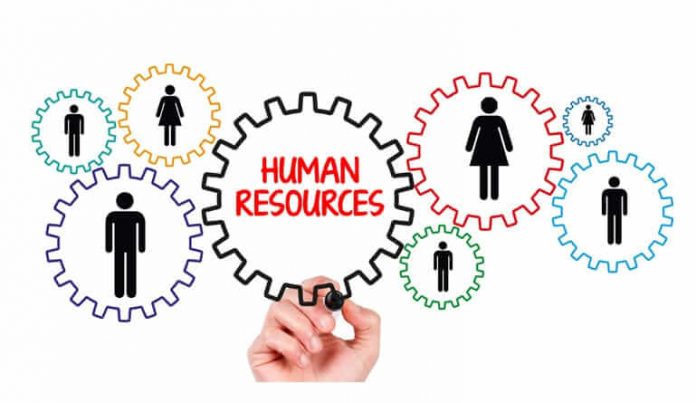This article has been written by Nandhini N pursuing a Remote freelancing and profile building program from Skill Arbitrage.
This article has been edited and published by Shashwat Kaushik.
Table of Contents
Introduction
Recruitment process in an organisation plays a crucial role in the growth and development of any organisation. Selecting the correct applicant is very important, as it will help the business with team development and the formation of core team members. The HR selection method has widely evolved during recent times. The major factors that affect HR selection methods have been discussed below in this article.
Factors affecting the HR selection process
Skill gap
In the present scenario, skill sets play an important role during any selection process. Education or qualification, represents the degree obtained by the individual. But the most important factor is the skill set. The recruiter checks if the applicant possesses the relevant skills required for efficient performance of the job. When the required skills are not present in the individual, it leads to structural unemployment, which means that there is a mismatch between what a job requires and what a worker can offer in terms of skills. As per the recent report from Pro School, An IMS Initiative, over 75% of the country’s graduates are unemployed as they lack skills.
When we mention the skill gap, it is not just related to Industry specific knowledge but also to a deficit in soft skills, digital literacy, technical skills and so on. The three most common skill gaps among employees are:
- Critical thinking and problem-solving skills
- Managerial and supervisory skills
- Communication and interpersonal skills
From the summarised version of 2023 Wiley Report, ‘Closing the Skills Gap’ given under the Emeritus blog, the report states that-
- 69% of the surveyed HR professionals believe their respective organisations suffer from a skill gap, which is a 14% rise from 2021
- The talent shortage results in up to 20% of unfulfilled job postings
- At least 50% of the interviewed professionals claimed that in the current job market, hard skills have a shelf life of merely two years
- The expertise of soft skills alongside hard technical skills is critical to arresting the digital skill gap
Virtual interview process
Virtual recruitment is not a new concept; however, post the covid pandemic, the remote hiring process has become the new normal. The advantages of virtual hiring include flexibility in scheduling, saving on costs, and a reduction in hiring time. While there are advantages to making the process virtual, there are also disadvantages. Choosing the right connectivity and video conferencing platform is crucial for an interview to be properly held. All the places might not have the proper connectivity and this might disrupt the interview process. Other disadvantages include background noise and other distractions during the interview process.
My personal experience with one of the telephonic interviews is that the candidate takes time to respond to a question mentioned due to connectivity issues; however, after 2 to 5 minutes, he comes up with an exact answer given in Google. To confirm this, more questions were asked for which the same pattern continued. This brings trust and ethical issues, which have to be properly addressed but keeping the current market in mind, virtual interviews cannot be totally ignored.
As per the Candidates Expectation Report 2023, 62% of the candidates would prefer an automated system that manages the interview process efficiently rather than lengthy back and forth communication. Also, according to the report from Withe in 2022, 55% of the hiring professionals today are in favour of conducting virtual interviews.
Use of technology and automation
Recruitment is a time-intensive process, however, thanks to artificial intelligence. The AI has made the tasks of recruitment simpler, which has saved a lot of time and money for the company. The AI is being used in different areas of the recruitment process, like candidate sourcing, screening, talent assessment, offer and onboarding. Though there are merits to using AI, there are a lot of disadvantages, which include a lack of human touch, data privacy, the possibility of algorithmic bias, and missing out on an understanding of the organisation’s culture.
As per the report from demandsage.com, already 35% to 45% of the companies use AI recruitment; 99% of Fortune 500 companies currently utilise these methods, while 65% of recruiters also use them. Also, the report states that in 2023, nearly 73% of the companies will have invested in recruitment automation.
Legal requirements
As per the legal requirements of some countries, it is important to provide equal employment opportunity, which requires that employers shall not discriminate in any part of the employment process due to race, colour, marital status, disability, gender, country of origin, religion or age. Equal opportunity is not just for the promotion of fairness and justice; it is also believed to promote productivity and employee engagement. To make this possible, recruiters follow the diversity strategy, which helps recruiters find and hire a diverse team. To implement equal opportunities at work, the recruiter is expected to reassess the job requirement to prevent gender discrimination and have a fair evaluation.
Recruitment policies
The organisations have a set of frameworks on how to hire and often HR is required to adhere to those standards. The policies often bring clarity on the need for the organisation, help find the right fit with the organisation’s culture and help in making sound hiring decisions. HR is also required to understand the recruitment policies of competitors and their effect on our policies. While recruitment policies often bring a lot of advantages, there are also the opposite effects that need to be addressed, which include stagnation in the company’s culture or creating an inflexible culture, missing out on new applicant’s who differ in views but will have a positive impact on the company, limiting access to talent, and limiting diversity. Thus, too remove these deficiencies, the recruitment policies of the organisation should be regularly reviewed and updated to reflect current economic developments and changes.
Salary negotiations and budget constraints
Salary negotiations in today’s market are expected to be communicated transparently, along with explanations and the company’s budget constraints. Gone are the days where the recruiter was expected to secure the best applicant within the maximum amount set in a budget. In the current market, recruiters are stuck between the competitor’s affordability to pay and their unwillingness to let a skilled applicant go. The recruiter is expected to stay informed about the pay scale offered by the competitors and negotiate for a better scale to retain a skilled and trained employee.
As per the statistics from procurement tactics, 40% of the applicant’s never negotiate their salary due to their fear of seeming demanding. Also, it states that 60-80% of the women don’t negotiate their salary during their first job. As a result of this non negotiation, people tend to feel that they are underpaid after joining and they tend to change jobs frequently, due to which recruiters are pressured to often seek new applicants, which increases the cost of recruitment and training in an organisation.
Experienced candidates and time constraints
Often, recruiters are required to search for and select candidates who have experience in the same field. This becomes a big constraint when they are given a tight budget along with this requirement. Experienced candidates usually demand a higher wage and their overall compensation requirements might not fit within the budget given to the recruiter, as a result of which the recruiter is being demanded to interview more and more applicants who will be suited for this role. They are also being forced to finish the whole recruitment process within a limited time frame. Thanks to AI, which has made it possible to filter out the possible candidates, not all organisations are able to invest in AI and thus HRs are still facing a huge shortage in the selection process of experienced and skilled candidates.
Probation and agreement/bond policy
Many organisations tend to have a probationary period during which the employee can leave the organisation without serving any notice period. This brings a huge cost involved, as if any candidate leaves the organisation soon after his training is over, HR is demanded to rerun the whole process again, which becomes a tedious task.
The organisations also have a bond or agreement policy, which candidates might not agree to. HR might find a highly suitable and desirable candidate, but might not be able to select the person as they might not agree for a bond. Though there are rules that bond policy cannot be enforced in an organisation, we still find it largely in practice. Thus, this bond policy or agreement policy increases the task of HR.
Remote work culture
Currently, more and more candidates are preferring remote jobs over onsite work. As per the Forbes Advisor report, as of 2023, 12.7% of full-time employees work from home, illustrating the rapid normalisation of remote work environments. Simultaneously, a significant 28.2% of employees have adapted to a hybrid work model. Also, about 16% of the companies are already fully remote, operating without a physical office. One of the most compelling statistics indicates that 57% of workers would consider leaving their current job if their employer stopped allowing remote work. And this brings up another barrier during the recruitment process, as providing a remote opportunity for a fresher might be challenging during their training process and monitoring them.
Conclusion
Current developments have improved the recruitment process and made it simpler; however, there are still many areas that need to be addressed, like maintaining the human touch, understanding the organisational culture, and amending the organisation policies to adapt to the current market trends. All of these require HR or the recruiter, to understand and analyse the current trends and help the organisation keep pace with them. Thus, the above factors have contributed to making the recruitment process a simplified but demanding one.
References
- https://workassist.in/blog/what-are-the-factors-that-affect-the-recruitment-process
- https://www.linkedin.com/pulse/human-resource-hr-selection-methods-faisal-sarwar/
- https://proschoolonline.com/blog/skillyatra-the-inquisitive-case-of-skill-gap-in-india#
- https://emeritus.org/blog/career-skill-gap/
- https://withe.co/blog/job-interview-statistics#key-job-interview-statistics-to-know
- https://www.demandsage.com/ai-recruitment-statistics
- https://procurementtactics.com/salary-negotiation-statistics
- https://www.forbes.com/advisor/business/remote-work-statistics
 Serato DJ Crack 2025Serato DJ PRO Crack
Serato DJ Crack 2025Serato DJ PRO Crack










 Allow notifications
Allow notifications



